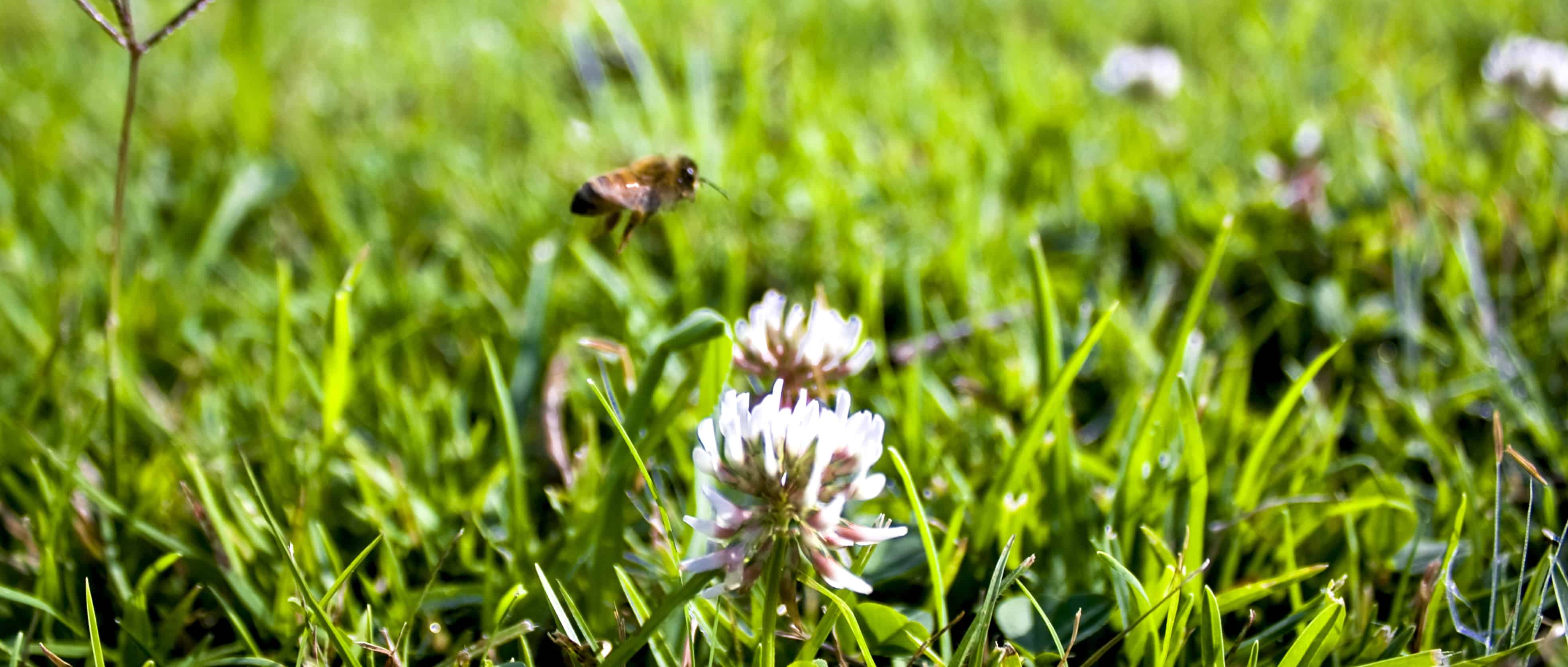Share this article
Being a Lazy Lawnmower Improves Bee Habitat: TWS Member
Putting off your lawn mowing chores could be a great way to improve bee diversity, according to ongoing research.
“There’s an incredible amount of diversity in these lawns when we look down and start to see what’s in these areas,” said Susannah Lerman, a research ecologist with the U.S. Forest Service and the University of Massachusetts. Lerman, also a member of The Wildlife Society, recently presented her research at the Ecological Society of America annual conference in Baltimore.
“I used to be one of these ecologists that was like ‘We have to get rid of our lawns, lawns are evil,’” she said, citing the chemicals people add to them and the frequent cutting as some of the problems they pose. But getting rid of the estimated 63,243 square miles of lawn space in the United States — around 40-55 percent of urban land in the country — would be a daunting effort.
In taking a closer look, Lerman found there was a quite a lot of diversity in lawns, particularly when it came to bees and the flowers they feed on. She wanted to know whether altering a simple thing like your household lawn mowing schedule could improve habitat for bees.
Lerman and a team of researchers funded by the National Science Foundation set out on a mission to track bee diversity on lawns that were mowed every week, every two weeks and every three weeks over two summers in Springfield, Mass.
The team agreed to mow the lawns of people who volunteered to be part of the study, and Lerman estimated that they mowed the mileage equivalent of pushing their way from Springfield to Philadelphia and back over the two summers.
“We mowed a lot of lawns,” she said.
To track bee diversity and the flowers they feed on, they put out traps near areas where flowers grew and found an average of 35 species per yard — the majority of these native species.
They also found that besides dandelions, clovers and violets, there were more than 60 different flower species that grew spontaneously in the lawns.
So far their research shows that less means more when it comes to the relationship between lawn-mowing and flower abundance. Lawns mowed every two weeks had 70 percent more flowers than those mowed every week, and lawns mowed every three weeks had 300 percent more than the weekly yards.
But this schedule didn’t necessarily translate to bee abundance. The yards mowed every two weeks had more diverse bee populations than those mowed every three weeks, though Lerman isn’t exactly sure why. “One explanation is that the grass might have been too tall and made it less optimal for the bees foraging on the small lawn flowers,” she said. “Another idea is that since the flowers were so numerous, the bees spent so much time foraging on them rather than visiting the traps.”
The whole experiment demonstrates the control humans can have over biodiversity in urban areas. But in this case, the news is good, as she said “lazy landscapers” do bees a favor.
“Here’s what you can get for doing less. For me that resonates.”
Header Image: A new study finds that mowing your lawn every two weeks rather than weekly may encourage bee diversity in your yard. Image Credit: Aristocrats-hat, licensed by cc 2.0








